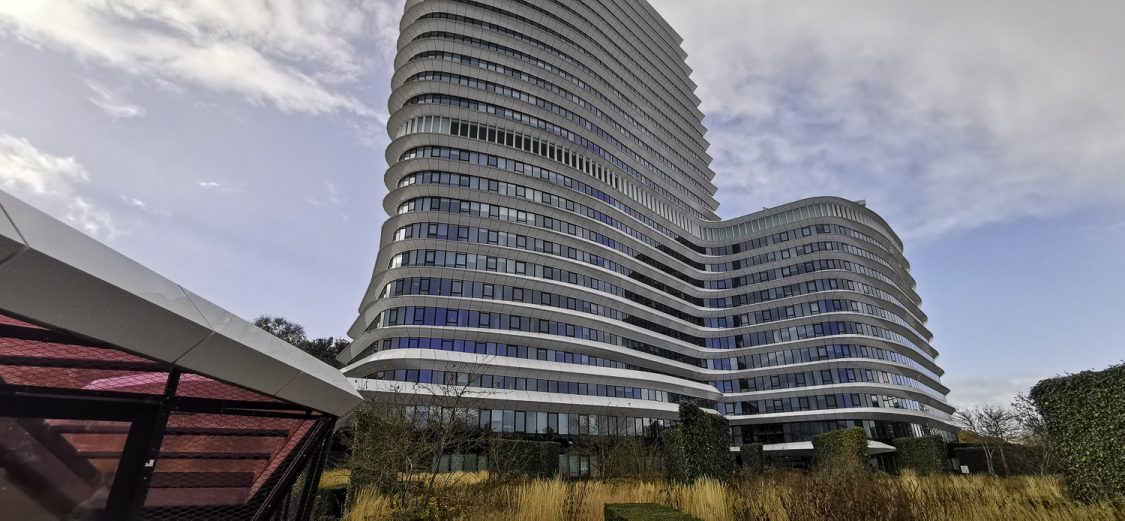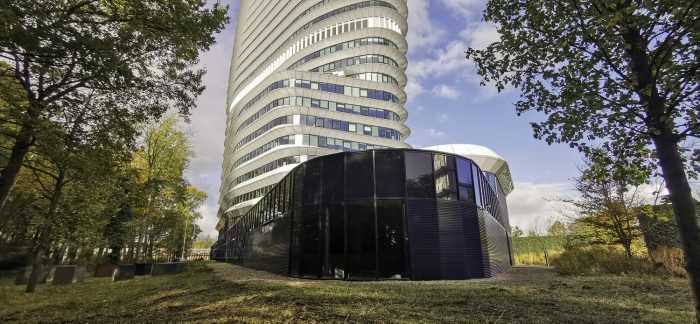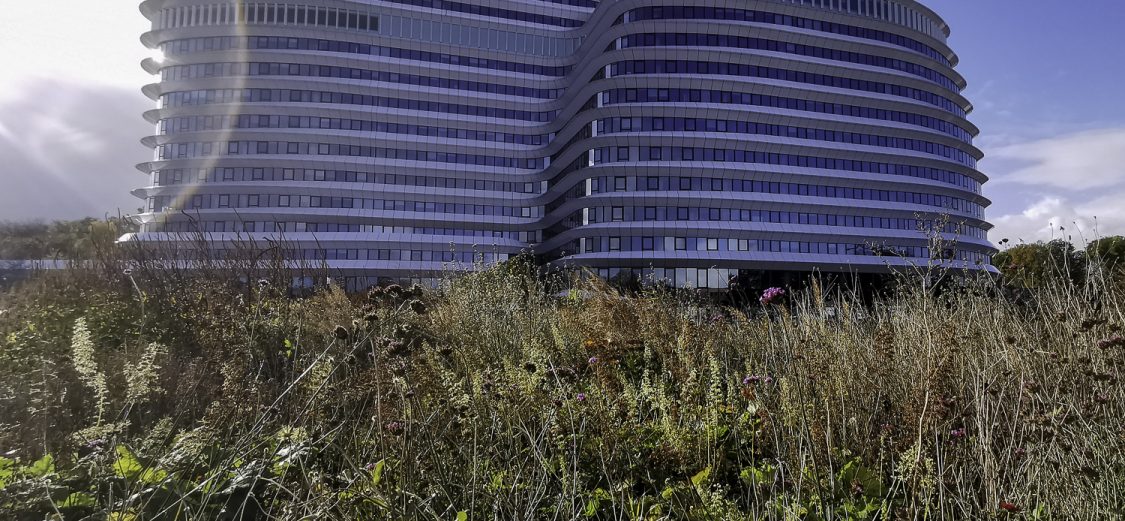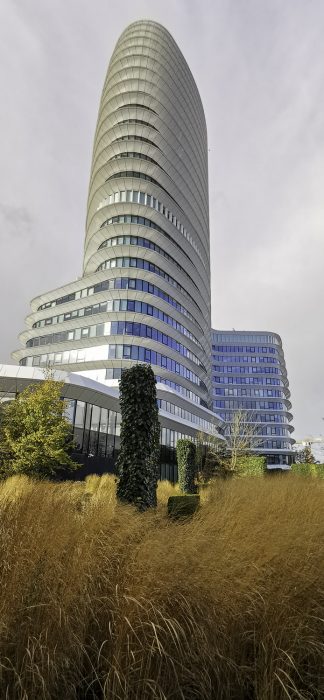
“We couldn’t make it anymore more fun.” The well-known winged advertising message from the tax authorities has now become famous tile wisdom in the Netherlands.
With the new office building of the Education Executive Agency (DUO) and the Tax and Customs Administration, it is in any case fine for the staff.
The well-known asymmetrical architectural style of UnStudio and in particular that of Ben van Berkel, a Dutch architect; founder and chief architect of the architectural firm is very recognizable.
That is why it is a pleasure for me to share my photos of a building, the Executive Agency Education and Tax Authorities office, that immediately demands attention when driving into Groningen.
All images here on the HUAWEI P30 Pro and edited in Lightroom.

Marking the skyline of Groningen, this organic, asymmetric office complex is set amidst ancient woodland that shelters protected species. The aerodynamic building houses two public institutions: the Education Executive Agency (DUO) and Dutch Tax Office.
High-rise buildings are often associated with mid-twentieth century modernism, their harsh, corporate exteriors containing powerful, inaccessible strongholds.
By contrast, the DUO and Tax offices building intentionally cloaks a commanding public institution in a friendlier and more future-oriented form.

A new, 92-metre-tall complex of soft, undulating curves now marks the skyline of Groningen.
This asymmetric, aerodynamic construction is set amidst small, ancient woodland, sheltering rare and protected species.
The project includes the design, construction and financing of two public institutions; the national tax offices and the student loan administration. The commission from the RGD (National Buildings Service) includes, besides the architecture, the management and building maintenance and care of facilities and services for a period of 20 years. Accommodating 2,500 workstations, parking facilities for 1,500 bicycles and 675 cars in an underground garage, the building will be surrounded by a large public city garden with pond and a multifunctional pavilion with commercial functions.

The architecture aims to present these institutions with a softer, more human and approachable profile.
Tall buildings are generally associated with mid-twentieth century modernism. Their harsh, businesslike exteriors contain powerful, inaccessible-seeming strongholds. By contrast, the DUO and Tax offices deliberately cloak a commanding public institution in an organic, friendlier and more future-oriented form.

“We paid a great deal of attention to how people would move through the building,” says principal Ben van Berkel.
“The office spaces are designed in such a way that they do not create simple linear corridors leading to dead ends, but instead each corridor has a route which introduces a kind of landscape into the building. You can take endless walks through the building, where there is a great deal of transparency, also towards the surrounding landscape.”

